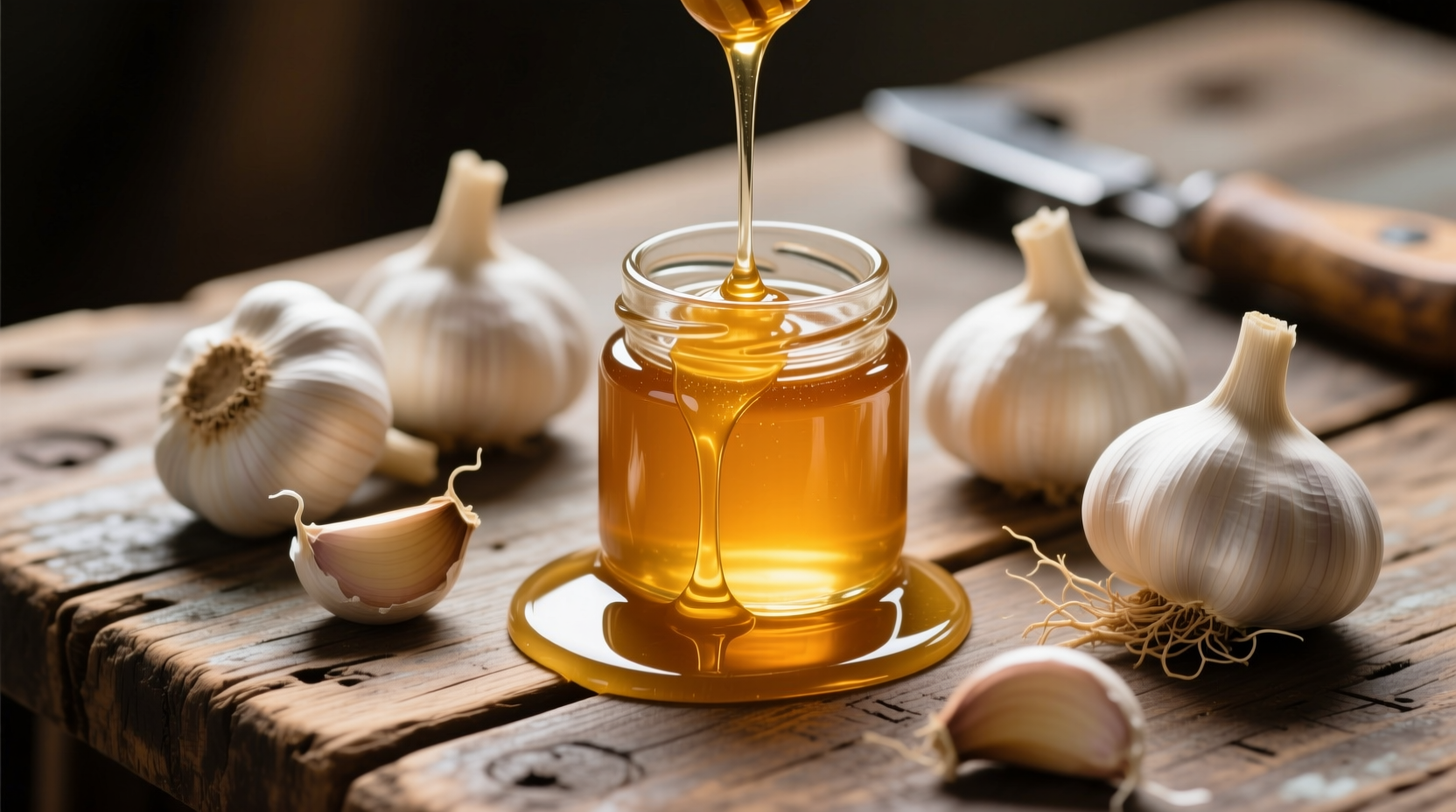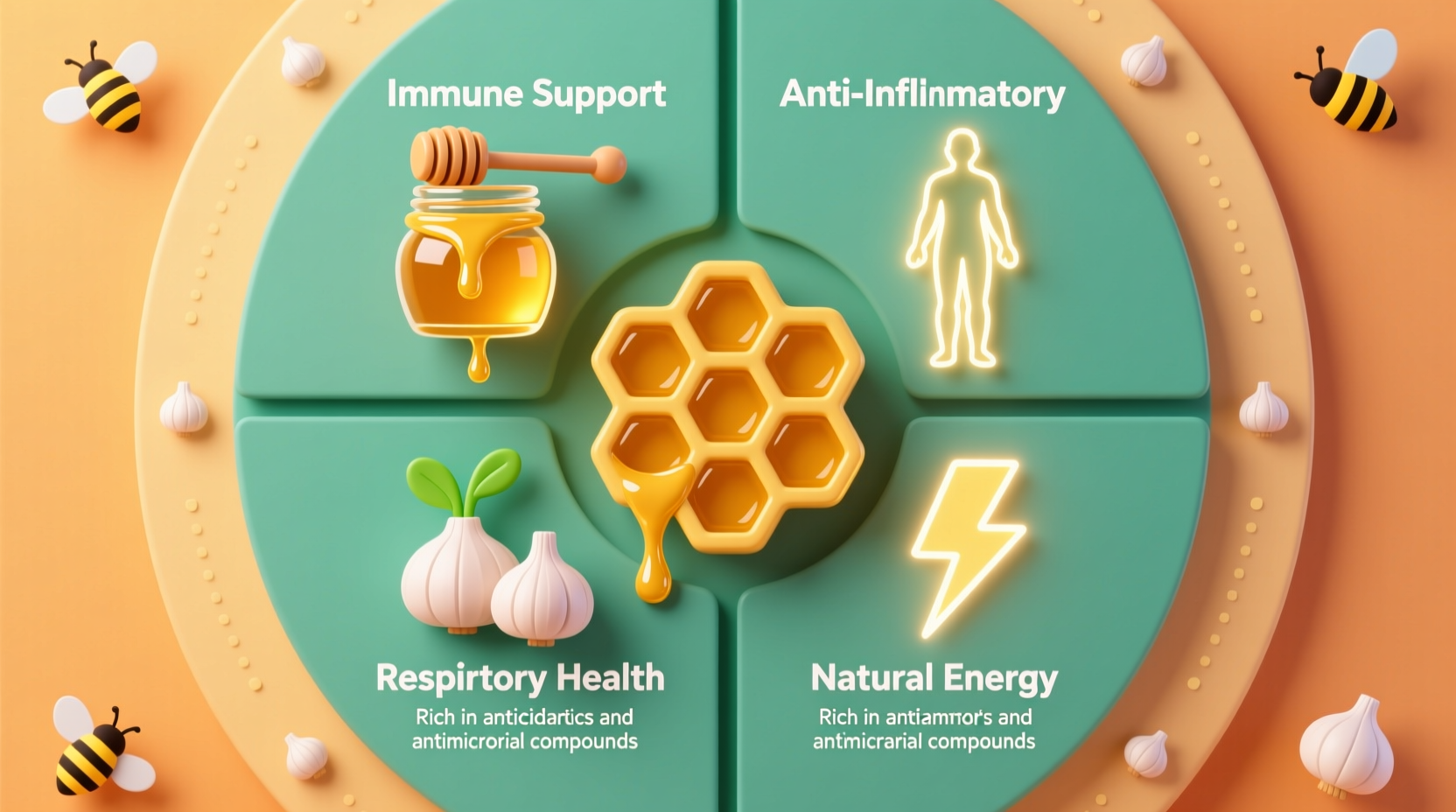For centuries, honey and garlic have been staples in traditional medicine cabinets across cultures. Modern research now validates many of these ancient practices while clarifying their actual effectiveness. This guide separates evidence-based benefits from popular myths, helping you make informed decisions about incorporating these natural ingredients into your wellness routine.
What Science Says About Honey's Health Properties
Raw, unprocessed honey contains over 200 bioactive compounds including flavonoids and phenolic acids that function as antioxidants. According to a comprehensive review published in the National Center for Biotechnology Information, honey demonstrates significant antimicrobial activity against common pathogens like Staphylococcus aureus and E. coli.
Unlike processed sugars, honey has a lower glycemic index and may support better blood sugar regulation when consumed in moderation. The World Health Organization recognizes honey's effectiveness for soothing coughs in children over one year old, making it a preferred alternative to over-the-counter cough medicines.
| Honey Type | Key Compounds | Validated Benefits | Research Source |
|---|---|---|---|
| Manuka | Methylglyoxal (MGO) | Wound healing, antibacterial | NIH Study |
| Raw Wildflower | Polyphenols | Antioxidant, anti-inflammatory | NCBI Review |
| Acacia | Low glucose content | Gentler on blood sugar | Journal of Apicultural Research |
Garlic's Proven Health Contributions
Garlic's primary bioactive compound, allicin, forms when raw garlic is crushed or chopped. Research from Mayo Clinic indicates that regular garlic consumption may modestly reduce blood pressure in hypertensive individuals and improve cholesterol profiles.
A meta-analysis in the Journal of Nutrition found that aged garlic extract supplementation significantly reduced total cholesterol and LDL cholesterol levels after 2-3 months of consistent use. The cardiovascular benefits appear strongest when consuming raw or lightly cooked garlic, as high heat can degrade allicin.

When Honey and Garlic Work Together Effectively
The combination of honey and garlic creates a synergistic effect for certain applications. Honey's viscosity helps preserve garlic's active compounds while making the potent flavor more palatable. This pairing works particularly well for:
- Immune support during cold season: A teaspoon of honey-garlic mixture may soothe sore throats and reduce cough frequency
- Topical wound care: Historical use as an antimicrobial dressing (though modern medical treatment is preferable for serious wounds)
- Digestive comfort: Small amounts may ease occasional indigestion when consumed before meals
Practical Application Guide
For maximum benefit, prepare honey-garlic remedies correctly:
- Basic immune-boosting syrup: Combine 1 crushed garlic clove with 2 tablespoons raw honey. Let sit 30 minutes before consuming. Take 1 teaspoon as needed for throat discomfort.
- Digestive aid: Mix 1/2 teaspoon honey with a small minced garlic clove 15 minutes before meals.
- Topical application: For minor scrapes, apply thin layer of honey-garlic mixture then cover with sterile bandage (not for deep wounds).
Always use raw, unprocessed honey and fresh garlic. Processed "garlic powder" and pasteurized honey lack the active compounds that provide health benefits.
Important Limitations and Safety Considerations
While beneficial in moderation, honey and garlic have important limitations:
| Situation | Recommendation | Scientific Basis |
|---|---|---|
| Infants under 1 year | Avoid honey completely | Risk of infant botulism from natural spores |
| Diabetes management | Monitor blood sugar carefully | Honey still affects glucose levels despite lower GI |
| Before surgery | Stop garlic consumption 7-10 days prior | Garlic may increase bleeding risk |
| Medication interactions | Consult doctor if taking blood thinners | Garlic may enhance blood-thinning medications |
These natural remedies should complement—not replace—medical treatment for serious conditions. If you experience persistent symptoms, consult a healthcare provider rather than relying solely on home remedies.
Maximizing Benefits Through Proper Storage and Preparation
The effectiveness of honey and garlic depends significantly on how you store and prepare them:
- Store raw honey at room temperature—refrigeration causes crystallization
- Crush garlic and let it sit for 10 minutes before mixing with honey to maximize allicin formation
- Use dark glass containers for honey-garlic mixtures to protect from light degradation
- Consume homemade mixtures within 7 days for maximum potency
Understanding these practical details transforms your approach from casual use to evidence-based application of these natural ingredients.
Conclusion: Realistic Expectations for Natural Wellness
Honey and garlic offer valuable health benefits when used appropriately within a balanced lifestyle. Their effectiveness shines brightest for minor, everyday wellness concerns rather than serious medical conditions. By understanding the science behind their properties and respecting their limitations, you can make informed decisions about incorporating these time-tested ingredients into your health routine.











 浙公网安备
33010002000092号
浙公网安备
33010002000092号 浙B2-20120091-4
浙B2-20120091-4